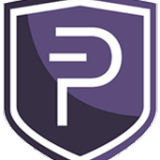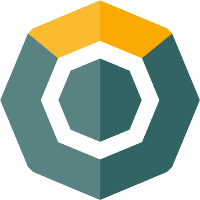Descrption:XRP Ledger is a real-time gross settlement system (RTGS), currency exchange and remittance network created by Ripple Labs Inc., a US based technology company. It is built upon a distributed open source internet protocol, consensus ledger and the decentralized native digital asset is known as XRP. Released in 2012, XRP Ledger purports to enable "secure, instantly and nearly free global financial transactions of any size with no chargebacks." It supports tokens representing fiat currency, cryptocurrency, commodity or any other unit of value such as frequent flier miles or mobile minutes. At its core, the XRP Ledger is based around a shared and public database or ledger, which uses a consensus process that allows for payments, exchanges and remittance in a distributed process.
The Ripple Protocol Consensus Algorithm
v1
Principle and design goals
In this work, we analyze one particular implemen tation of a distributed payment system: the Ripple Pro tocol. We focus on the algorithms utilized to achieve the above goals of correctness, agreement, and utility,• and show that all are met (within necessary and predeter mincd tolcrance thresholds, which are well-understood).In addition, we provide code that simulates the consen sus process with parameterizable network size, number of malicious users, and message-sending latcncics.
Technology implementation
Consensus mechanism
The Ripple Protocol consensus algorithm (RPCA), is The Ripple Protocol consensus algorithm (RPCA), is applied every few seconds by all nodes, in order to maintain the correctness and agreement of the network. Once consensus is reached, the current ledger is considered “closed” and becomes the last-closed ledger. Assuming that the consensus algorithm is successful, and that there is no fork in the network, the last-closed ledger maintained by all nodes in the network will be identical.
Accounts and transactions
The ecosystem of RippleNet participants is categorized into two key groups: network members (banks and payment providers) and network users (corporates, consumers and others).

Smart contract system
Cryptography
Payment Data Separation
Implementing a payment system on xCurrent provides a layer of separation and security between payment data and settlement data for financial transactions that are executed over ILP. Validator only sees the cryptographic cases that it uses to mathematically verify that the each institution has fulfilled the conditions required to execute the payment and does not require payment data. This limits the number of times data needs to be transmitted between the two banks. The actual payment data is encrypted and shared only between the two institutions making payments to each other when necessary. The following types of payment data are stored and maintained in internal databases that are only accessible by each bank:
• Identifiers for originators and beneficiaries
• Required PII/CIP information for originators and beneficiaries
• Additional payment information such as invoice numbers
• Additional metadata
Secure Communication
Banks’ internal systems communicate with xCurrent over secure HTTPS connections and use OAuth 2.0 for authentication. ILP components of xCurrent use HTTPS for secure communication with each other and Messenger, using CA certificates for authentication.
HTTPS is also used for:
• Pre-transaction communication between Messenger instances at corresponding partner institutions
• Communication between Messenger, Validator, ILP Ledger and FX Connector.
Payment
Distributed storage protocol
Cross-chain and exchange technology
Special technology
Economic model and incentive
Enhance Customer Acquisition And Retention
By delivering new products and services to retail and corporate customers -- featuring high-speed, on-demand, cost-effective and traceable global payments -- in both assisted and unassisted channels, it provides an opportunity re-engage and retain existing customers. xCurrent’s frictionless payment experience mitigates disintermediation from online, non-bank payment providers. The solution is a key competitive advantage and promotion-worthy offering to drive customer acquisition.
Lower Operational Costs
With xCurrent’s bidirectional messaging, banks can more efficiently exchange information regarding the sender, receiver, fees, rates, delivery estimate and payment status to lower their operational cost of processing international payments. Payment processing costs are significantly reduced through xCurrent’s ability to increase STP rates and eliminate SWIFT fees. Treasury operations costs are decreased by lowering in-flight capital requirements, liquidity costs, counterparty risk and compliance costs. Reconciliation costs are reduced due to xCurrent’s ability to provide instant confirmation and real-time liquidity monitoring.
Governance mechanism
RippleNet Rulebook And Governance
The value of RippleNet derives from its combination of key elements: standardized and powerful technology; a global network of banks and payment providers; a consistent set of rules and standards and a governance structure comprised of an advisory board of industry leaders. To join RippleNet, both members and users sign an agreement with Ripple and follow the rules and standards as outlined in the Rulebook, which eliminates the need for inefficient bilateral agreements.

Rulebook
The objective of the Rulebook is to create a legal framework that ensures optimal working relationships with all network participants and a seamless experience for the end user. The Rulebook provides detailed information regarding the rights and obligations of network participants, business and operational rules and the process for changes to the Rulebook. It also offers in-depth technical standards regarding the end-to-end transaction flow and defines the service-level agreement between transacting parties. In essence, the Rulebook creates consistency across RippleNet by providing operational certainty and legal clarity for every transaction.
RippleNet Advisory Board And Governance
Ripple actively consults its advisory board which includes industry leaders from Transaction Banking, Digital Services and Cash Management. Regarding the Rulebook, the advisory board provides governance to consistently ensure that the rules and standards are in close alignment with the exact needs of today’s banks and their customers.
Applications
Contributors
No contributors information for the version. to see perfessional version!
Comment
| Rank | Blochchain | Similarity |
|---|---|---|
|
1st
|
WGR
|
25.2127533333333% |
|
2st
|
BTC
|
25.1549966666667% |
|
3st
|
PIVX
|
24.5449644444444% |
|
4st
|
ZCL
|
23.1868666666667% |
|
5st
|
TRX
|
23.075075000000002% |
No analysis results for the version. to see perfessional version!
| Rank | Blochchain | Similarity |
|---|---|---|
|
1st
|
NANO
|
17.8338% |
|
2st
|
XZC
|
13.1098% |
|
3st
|
ZIP
|
10.119499999999999% |
|
4st
|
SMT
|
8.959200000000001% |
|
5st
|
KMD
|
8.798499999999999% |
Name:
Company:
Email:
Location:
Repos:
Followers:











